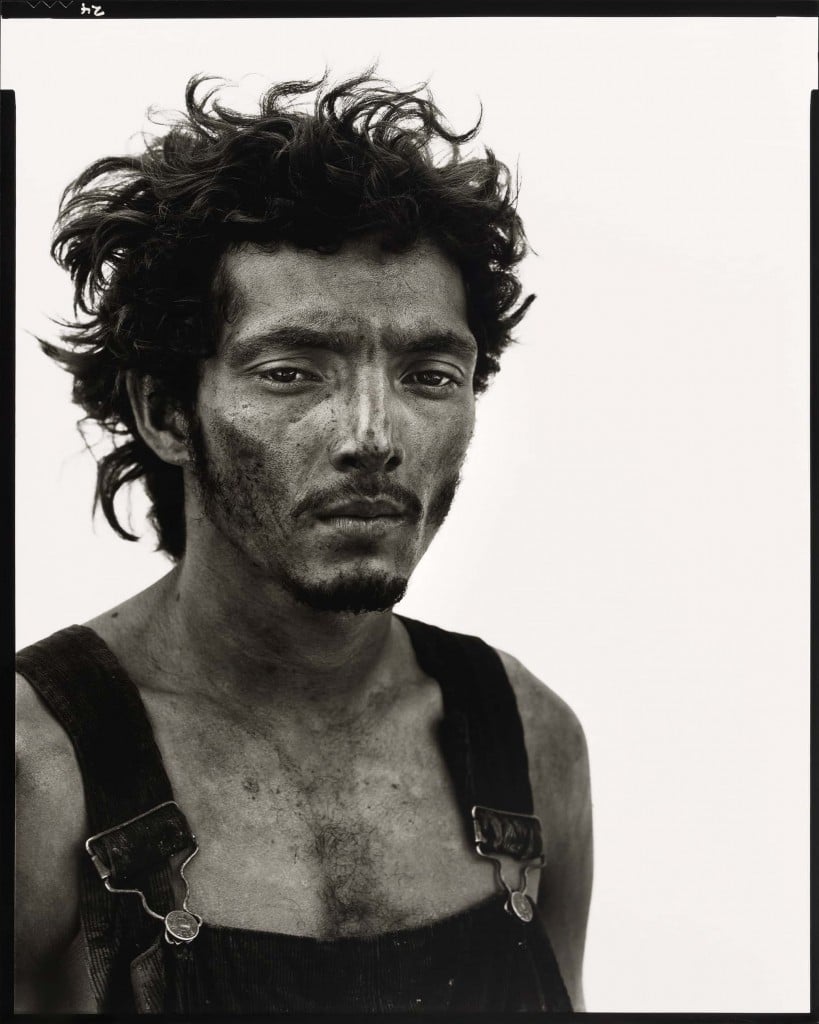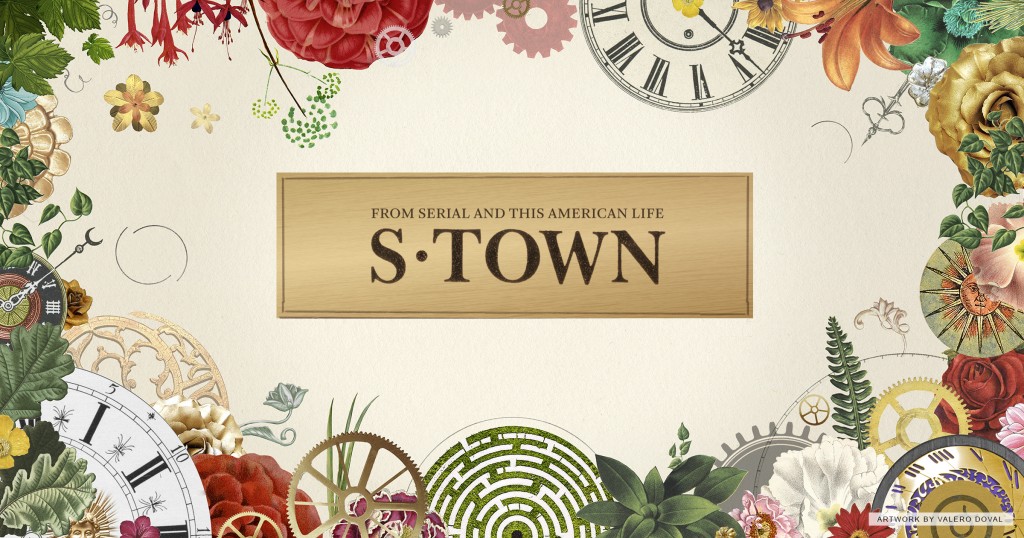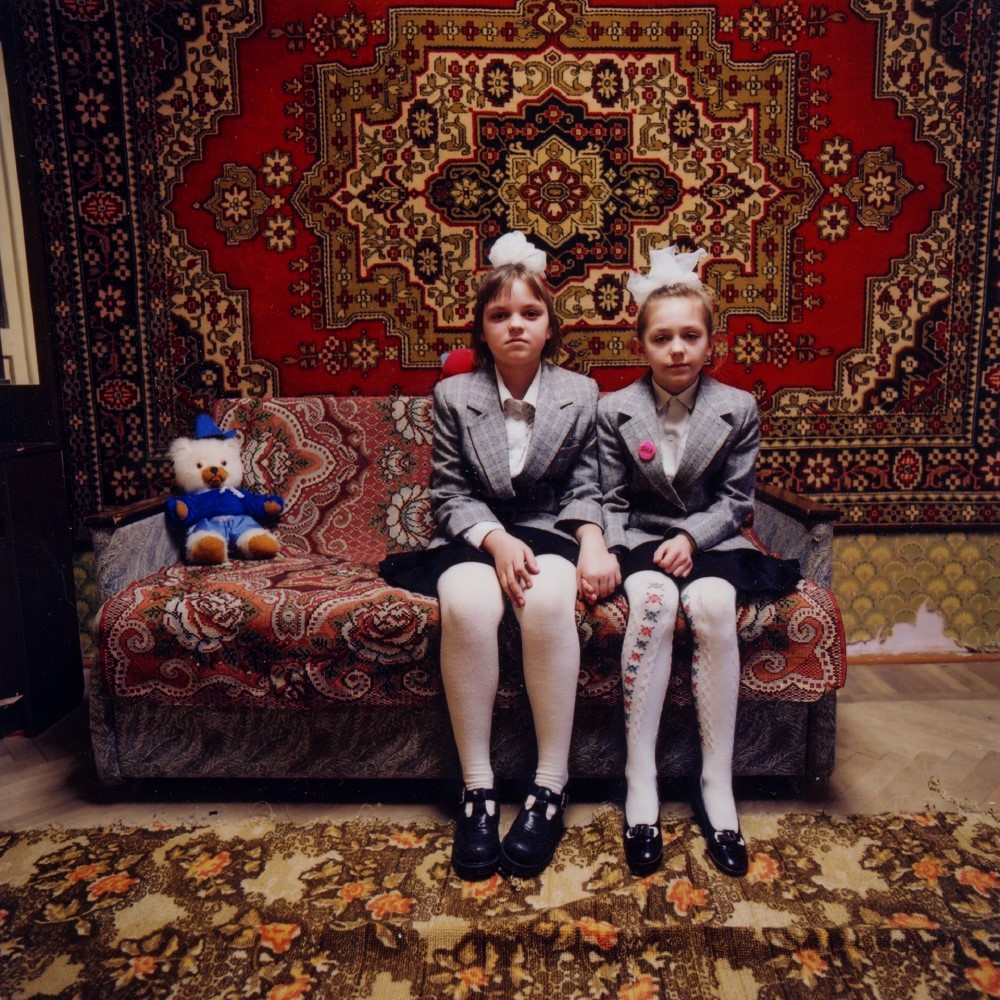Terrifying Photography Captured In America’s Haunts
ArtandSeek.net October 26, 2017 34Welcome to the Art&Seek Artist Spotlight. Every Thursday, here and on KERA FM, we’ll explore the personal journey of a different North Texas creative. As it grows, this site, artandseek.org/spotlight, will eventually paint a collective portrait of our artistic community. Check out all the artists we’ve profiled.
Bloody hatchets, roaring chainsaws and demonic clowns are some of the terrifying things that could get you hyperventilating at a haunted house. In the latest Art & Seek Artist Spotlight, I explore the idea of “fear as entertainment” with Richardson native Misty Keasler. Keasler spent two years photographing the scariest haunts in North America.
According to the ‘Guinness Book of World Records,’ Cutting Edge Haunted House – in Fort Worth – is one of the world’s largest haunted attractions. But it’s not just big. It’s scary as hell.
“It was really nerve-wracking,” says 16-year-old Bailey Biancalana from Keller. She and her friends endured the 55-minute trek through Cutting Edge, which is inside a 100-year-old meat packing plant. “We really didn’t know what was going to happen and I was kind of scared to look up the whole time (laughs). It was really scary.”
Biancalana was terrified by zombie nurses and chainsaw wielding maniacs. Yet she says they had a good time.
Sociologist Margee Kerr says laughing after a good scare is totally natural.
“Within milliseconds, when we realize, when we remember, ‘Oh! I’m not really being chased by a serial killer. I’m actually safe.’ You can enjoy that physical response,” Kerr says. “You can kind of ride the natural high, as they say.”
Kerr studies fear. Her interests are ‘why we fear what we do’ and ‘the ways we engage with thrilling and scary material.’
“Even though you know that the zombies aren’t real, just stressing ourselves leaves us feeling accomplished. Just like running a marathon or rock climbing,” explains Kerr. “We took on a challenge and we made it through, and it feels good.”
Kerr says the scenes inside haunted houses like human innards on a butcher’s block or ice cream trucks splatted with blood may show us the worst of human behavior. But they’re in bite-size bits.
“Laughing at them is a way of laughing at our fears too. We get a glimpse of it, but we can’t tolerate it long. That takes us to a very different level,” says Kerr.
That’s a level documentary photographer Misty Keasler wanted to explore.
“You know that biological imperative to run for your life takes over, so you can’t see what you’re looking at,” says Keasler. “But there’s just no time to look at all these details that make it an immersive, seamless experience.”
Keasler wants to check out those details because she’s genuinely curious. And photography is her way of exploring sub-cultures and sharing them with the public.
“I am really interested in artifice and all the levels of work that go into creating these spaces,” Keasler says.
For the photo series titled “Haunt,” Keasler spent two years visiting 13 haunted houses across the United States. She was given extraordinary access. And while photographing the interiors, she learned about the extensive thought and effort that go into crafting spaces that will not only scare you but leave you with a lasting memory.
“I think that they really are passionately and lovingly created,” Keasler says. “And there’s so many levels of illusion. It feels like it’s about to fall apart on you and yet, it’s held to one of the highest safety standards that exist.”
Keasler likes to explore created environments — like the so-called ‘love hotels’ in Tokyo. Doing so helped make her name nationally as a photographer. The Richardson native’s artwork is in the collections of top museums in Dallas, Houston, Chicago and Tokyo.
But she understands that photography – even well-done photography – has its limitations.
“Any documentation of an immersive haunted house will completely fail,” she says. “There’s no way you’re going to look at a series of photographs and be so tense that if someone touches you, you scream. It just doesn’t work.”
Instead, Keasler says, inside the safety of a museum, seeing images of satanic monsters, bloody surgery rooms or a bedroom lined with posters of missing children illicits something different.
“There’s a really different sort of psychological response to looking at a photograph that’s about the same fears that the haunted house has,” explain Keasler. “But they just operate differently. It’s much quieter. It’s more contemplative. It’s much more personal.”
Keasler’s focus on Haunts was triggered by her husband’s enjoyment of them. She became fasinated. She began seeing links between the haunts’ storylines and real serial killers like John Wayne Gacy.
“Fear is cultural, so this is really very culturally specific to the United States,” says Keasler. “In Japan, the actors are all dressed as ghosts.”
The haunts excite us because they let us enjoy ghouls and goblins. The same for Keasler’s photography. But the photos reveal something else as well. By stepping back and considering these scenes in detail, we can see how our popular culture amps up our worst fears.
When did you become interested in art, artwork and photography?
Well, I was always interested in photography. When I was seven, I remember that I wanted to have a “real” camera – even though I didn’t quite know what that meant. My parents thought it was going to be a passing phase and they didn’t want to spend a lot of money on a camera, so they got me a Polaroid.
But I’ve always been interested in photography and have always spent all of my money on photo books. You know, as soon as I had allowance and money.
Once I had saved up enough money to buy myself a film camera, I had it on me at all times. I took photos for the yearbook when I was in high school. But I never envisioned that it was something I could do as a career. In fact, I went to school to study theater and acting – because that’s so much more practical – the school I attended cut students. That means not all of the students graduate. And two years in, I got cut. The implication was that I was better off pumping gas than I would have been acting. Which is probably true.
I was devastated. But I began taking courses at community college the next year. And I took photography classes, because I really wanted to work in a dark room and then things really took off. I poured myself into photography and I was really getting back what I put in.

Roberto Lopez, Oil Field Worker, Lyons, Texas, September 28, 1980
Photo: Richard Avedon: In the American West
Was there any particular thing or event from your life that drew you toward photography?
I saw Richard Avedon’s “In the American West” pretty early and that had a very profound effect on me. You know? Those portraits of ordinary people. I just felt like they were so compelling and intimate and descriptive in this really rich way that was unlike anything that I had ever seen before. And there was almost something magical that was happening in those images that was so compelling.
Do you think that you see the world differently than others even when the camera isn’t in front of your face? Is there such thing as an “eye” for photography?
When I’ve taught photography in the past, I’ve told my students that there’s nothing that will teach them better than spending time looking at good photography that interests them. So I kind of wonder if that’s a chicken and egg situation for me personally.
I definitely think I see the world differently. If you take the haunts, walking through Thrillvania Haunted House Park, I kept stopping to stare at all of the details in the spaces and that’s what I obsessed over until I was able to go back and spend time focusing the camera on those things.
So I don’t think I have really answered your question, but I’m not sure that I have a satisfactory answer for the question, because I’ve spent so much time just looking at things. It started with a love of photography and it’s really branched out into looking at all forms of artwork and getting obsessed with Dutch painters and portraits that happened before the camera came along. I think all of those things are a huge influence on everything I make now.
How does being here (in North Texas) affect the production of your art?
I think personally I’m really invested in this place. It’s my home. I love it. I’ve lived in other places – for a little while I thought that I would never live in Texas and I would never live in the suburbs and then once I lived in Japan and Chicago and New York I realized that I was grounded in my home. I find it a really solid base to work from and the community is just so supportive.
I bet it also helps when you’re in exotic place like a fantasy hotel in Japan or wastelands near Nigeria too, because it’s not like you see those things in North Texas.
Right! And I spend a lot of time photographing things that we don’t spend a lot of time looking at anyway. Even the haunts, you know? Normally you are running through them and not stopping to look around. That’s the focus of my work.
I had a conversation a few years ago with photographer Alex Soh and he said that he thinks there are two kinds of photographers: the photographers who can photograph home and the photographers that don’t (laughs).
Do you listen to music while you work?
I listen to podcasts like nonstop.
Really? Can you tell me what sorts of podcasts you listen to and why?
I listen to a lot of news and political podcasts, because I am not a sports person and I think of politics as my sport. But I’ve been listening to political podcasts less lately.
Lately I have been drawn to podcasts that mimic documentary. And I love things that art intellectually stimulating for me, so “RadioLab,” “This American Life,” “Criminal,” – hold up I need to pull up my list on my phone – “Fresh Air, “Hidden Brain… And I listen to “Serial” and the Richard Simmons Podcast and “S-Town.” Gosh! When I was done with “S-Town” I sort of wished I could unhear it.
I tell people that when I finished “S-Town” that I had the same feeling I had when I finished “Requiem for a Dream” – why I put myself through this.
Yeah! I thought so much about the show once it was over. I thought it was so exploitative. Extremely. I was pretty torn. How did you feel?
Well, it’s tough. By the end of the series I felt the same as you. But in the beginning, like during the first two episodes, it didn’t feel wrong. It felt like a curious journalist was telling a story about a curious dude. But that fades.
In the beginning the main character was a collaborator and in the end they took it too far. They shared things that he would have been mortified to have people know. If it was fiction, it would have been brilliant.
I was just really disappointed that they took it as far as they did. I think they made some choices – but you know what, photographers have had to wrestle with issues of exploitation in very direct ways for a long time and I think that’s just new territory in that area.
You’re a documentary photographer. And that means you’re telling whole truths. In the past, photographers have watched people die in order to capture the perfect photo. What role do you have in being ‘human’ when you’re being a photographer?
I think every photographer needs to confront that question and needs to revisit it all the time. For me, it’s extremely important that the people I am photographing know why I am there, what I am doing and that they have an option at any time to opt out.
I always ask before I take photos. And sometimes when I am I different countries, that drives my translators crazy! But I need them to understand who I am, what I am doing and why am doing it. I need them to be okay with it.
There have been people who’ve said ‘no.’ And I could have easily snuck them into the frame, but I don’t do it. I just think you need to draw a line. I need them to feel like they’re collaborating, even if they’re just saying ‘yes.’
Will you talk with me about portraits?
I have worked on projects where I really work with the subject about how to make their portraits. I work really slowly. I am not just out there with my camera on my hip shooting photos as they happen. I need my subjects to sit for me and to sit for a long time, so we’ll talk about the end result and how the picture should be.
When I made the “Orphanage” photographs, I wanted those children to be dignified. So we would talk about poses where they would look strong. I was trying to not make the sorts of photographs I had in my head. You know the sorts of photos people have made of children orphanages. But once I was there, it struck me that those people had nothing and to photograph them in the same way I had seen before would just take something from them. And they already had nothing.
Are you creatively satisfied?
I feel like I am in a really good place right now, but I will always have a hunger in my belly. I think that’s the reason I will continue to create.
Honestly, I feel like that’s an easier question for me to consider if I look at a specific body of work. Like, right now, with “Haunt” I am really happy. I am excited about where it landed. But if I were really creatively satisfied, I feel like I would be done and I’m not.
What inspires you?
I’m curious and I have a lot to say. I think that I am more articulate with images and with visual language than I would be with words.
Recently someone asked me what the through lines of my work were. They were saying that I have a couple of different styles of work that were very different from one another, like pop culture vs human issues. And really I think they’re all portraits of humanity. That’s how I think about all of my work. And I don’t think I’ll ever let go of that.
What makes you different or special from other photographers in this region?
I feel like this would be a better question with beer and my publicist (laughs).
Well, I think of my work in relation to still life painting all the time. And I think that I’m interested in really getting in with people who often don’t allow photographers close intimate looks at what they’re doing. And I feel like it’s a true luxury to get to spend as much time as I do obsessing over subjects and making photographs that are often similar to still life paintings.
Interview questions and answers have been edited for brevity and clarity.













